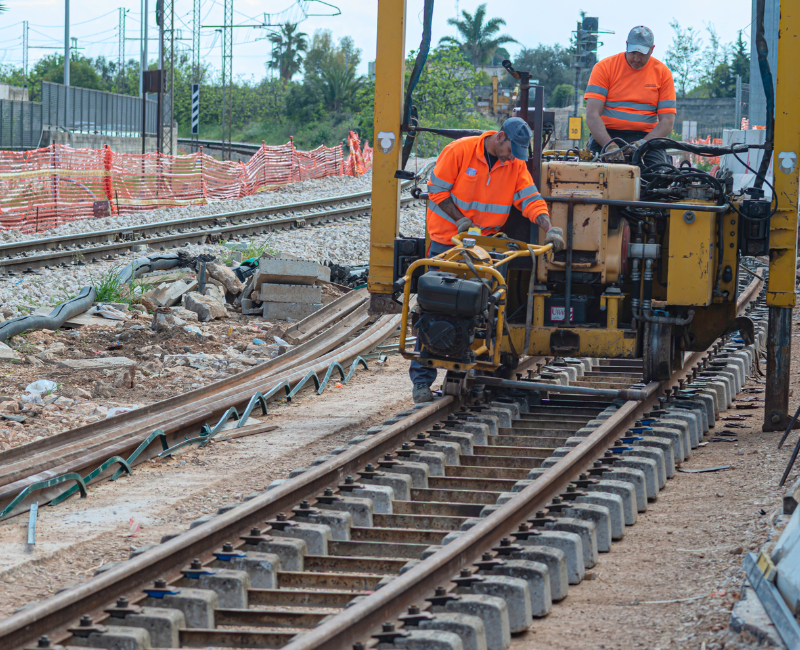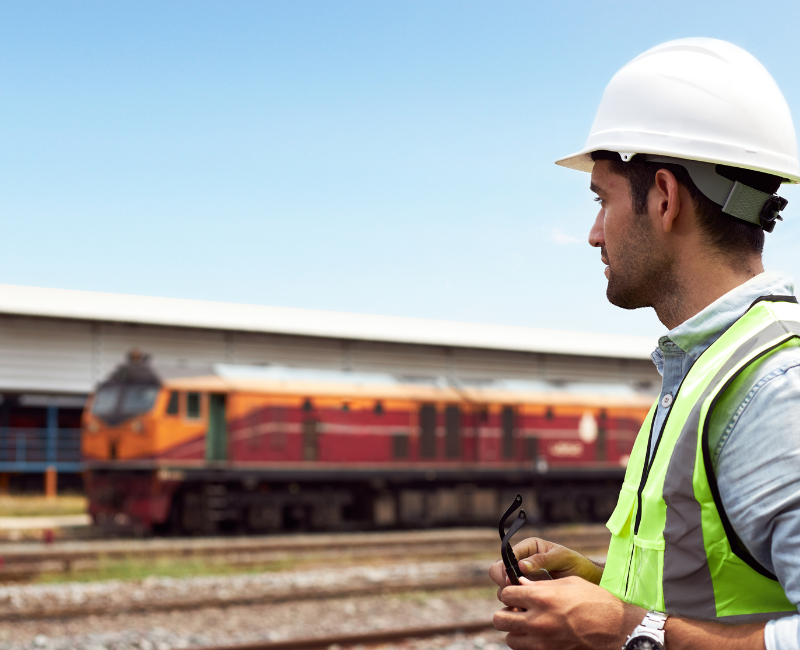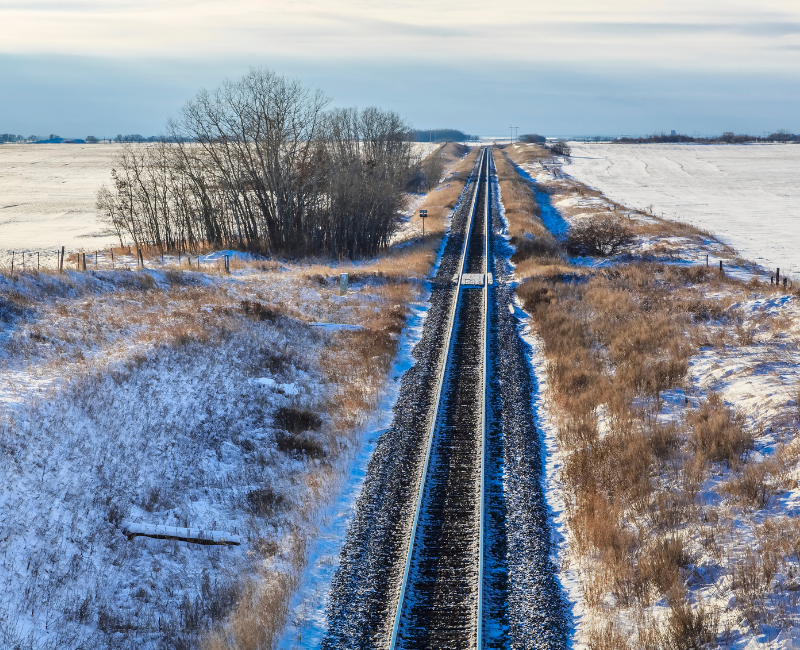Railway tracks serve as the lifelines of transportation networks, enduring extreme temperatures that test their structural resilience and safety measures. Across regions like Scandinavia, North America, and Russia, where temperatures plummet to staggering lows, maintaining railway integrity becomes an arduous task. Recent research highlights the significant impact of harsh weather conditions on operational costs, indicating a pressing need for innovative solutions. In this context, leveraging advanced technologies for real-time ground temperature monitoring emerges as a crucial strategy to preemptively address maintenance issues and bolster safety standards within railway operations.
Track Maintenance and Safety
Railway tracks have strict tolerances for variations in grade (heave/settlement) and twist, compared to a highway, to prevent derailments. According to Transport Canada, the track surface tolerances depend on the class of track and vary from 2.5cm (1”) to 8.9cm (3.5”) of differential across different planes up to 18.9m (62ft) long (Transport Canada, n.d.). Railway tracks endure extreme temperatures, which can cause variations, posing challenges to their structural integrity and overall safety. Railways in regions like Norway, Sweden, Finland, Canada, Russia, and the United States face severe atmospheric conditions. Temperatures plummet as low as -30°C in Nordic areas and reach around -35°C in parts of North America. Amid these conditions, railway operations are significantly impacted, as evidenced by the notable surge of 9% in operational costs in Canada in 2019 due to snow and ice accumulation (Lotfi and Virk, 2023).
Real-time monitoring of ground temperatures using advanced technologies such as digital thermistor strings can help identify areas prone to issues like buckling or cracking, enabling proactive maintenance and ensuring the safety of railway operations. By leveraging ground temperature data, railway operators can prioritize maintenance efforts and allocate resources more effectively, ultimately reducing the risk of track-related incidents.

Winter Operations
Managing railway operations during freezing temperatures in winter presents significant challenges, often leading to delays and cancellations worldwide. During winter operations, a research from Sweden indicates that failures causing train delays spike by up to 41% compared to summer (Stenström et al., 2012). To combat icy conditions, one commonly employed method is hot air melting under the train, where heated air is released to thaw snow and ice on the bogie surface. This approach, categorized into convection melting for thin ice bodies and gravity shedding melting for thicker ice bodies, is prevalent in real-world applications (Liu et al., 2020). Leveraging ground temperature data from digital temperature cables can enhance these efforts by providing crucial insights into soil conditions, thereby enabling more precise and effective de-icing strategies.
Infrastructure Planning
Effective infrastructure planning is critical for the long-term sustainability and resilience of railway networks, especially in regions prone to temperature extremes. Recent studies have underscored the importance of considering ground temperature variations in railway design and construction projects. For example, research conducted in Tibet has highlighted the significance of ground thermal properties in determining the stability of railway embankments and tunnels (Chen et. al., 2023). Incorporating ground temperature data into geotechnical assessments and engineering calculations empowers planners and designers to make informed decisions regarding foundation design, material selection, and insulation requirements.
Moreover, continual monitoring of ground temperatures throughout the lifespan of railway infrastructure facilitates proactive maintenance and rehabilitation strategies. By identifying changes in thermal conditions over time, railway operators can anticipate potential challenges such as frost heave or thaw settlement and implement preemptive measures to mitigate their impact. Freeze/thaw cycles happen in many regions, beyond just permafrost zones, where winter temperatures are low enough to freeze the upper layer of the ground and the soil type and moisture conditions make an area susceptible. This proactive approach not only reduces the likelihood of costly repairs and service disruptions but also prolongs the service life of railway assets, ensuring the reliability and efficiency of transportation networks.

Permafrost Monitoring
Permafrost monitoring emerges as a crucial strategy in mitigating the impacts of climate-induced permafrost thaw on railway infrastructure. As revealed by a recent study, under varying climate scenarios, up to 34% of Arctic railroads are projected to suffer from damaging ground subsidence, with associated costs reaching billions of dollars. By integrating advanced monitoring technologies, early warning systems and mitigation strategies, infrastructure management can be made more efficient, thereby minimizing disruptions and associated expenses. This proactive approach aligns with the study’s findings, which emphasize the potential savings of up to $94 billion under a moderate warming scenario compared to a high emission scenario (Streletskiy et. al., 2023).
By prioritizing permafrost monitoring and infrastructure adaptation efforts, stakeholders can optimize resource allocation and reduce the socio-economic burden imposed by climate-induced damages on railway networks. Ultimately, fostering collaboration among researchers, policymakers, and industry stakeholders is essential for implementing effective monitoring strategies and safeguarding critical transportation infrastructure in the face of accelerating climate change.

Regulatory Compliance and Data-driven Decision Making
Ground temperature profiling and monitoring are integral not only for operational efficiency but also for meeting regulatory standards and enhancing data-driven decision-making processes within the railway industry. Regulatory authorities, particularly in countries like the United States, have stringent environmental regulations mandating the monitoring and reporting of ground conditions near railway infrastructure (Marsh, 2023). These regulations aim to ensure the safety and sustainability of railway operations while minimizing environmental impact. By investing in robust temperature monitoring systems, railway companies can not only ensure compliance with regulatory requirements but also harness valuable data insights to optimize resource allocation and enhance overall operational efficiency.
Conclusion
In an era characterized by climate change-induced challenges, the significance of proactive track maintenance and safety measures cannot be overstated. By integrating ground temperature monitoring systems into railway operations, stakeholders can not only mitigate the risks posed by extreme weather but also optimize resource allocation and enhance overall efficiency. Regulatory compliance, coupled with data-driven decision-making processes, forms the cornerstone of sustainable railway management in the face of evolving environmental dynamics. Through collaboration and technological innovation, the railway industry can navigate the complexities of climate change and ensure the longevity and reliability of critical transportation infrastructure for generations to come. beadedstream offers digital temperature cables, data loggers, and cloud-based monitoring dashboard, facilitating real-time understanding of ground temperature profiles. Data collection along linear infrastructure, often in remote areas, is easily facilitated through these solutions. This capability enables early identification of problem areas and assessment of mitigation efforts aimed at countering the challenges facing the railroad infrastructure industry. By incorporating such technologies into railway infrastructure management strategies, stakeholders can bolster safety measures and ensure the resilience of transportation networks. For further inquiries or assistance, please contact beadedstream at contact@beadedstream.com.








